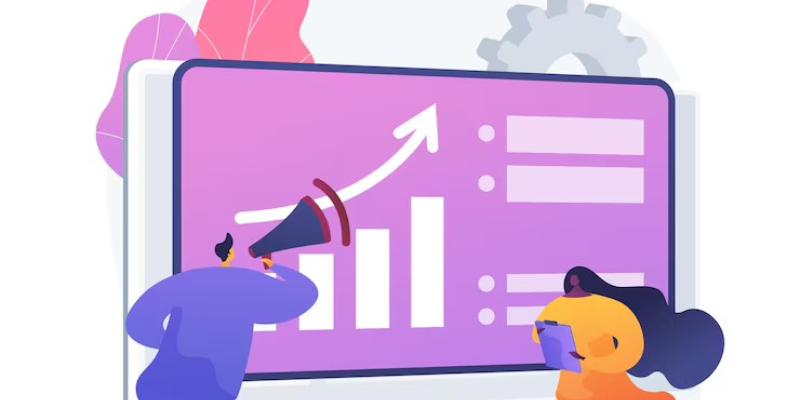

Today, Google Search Ads are central to effective web marketing in the digital age. In the following parts, this guide will expound each of the Google Search Ads concepts from the beginning to the strategic level. For new marketers and those who have been into marketing for years, this article is a perfect guide on how Google Ads can be an effective marketing tool.
Google Search Ads is an online advertising model where the advertisers pay each time an individual clicks on the ad. These ads appear in Google’s search results. Business people offer relevant keywords for their business, and the advertisement pops up when a user searches for the appropriate word. The first pro relating to Google Search Ads is that it enables the advertiser to target potential customers at the time of their search with interest in what the businessman has to offer.
1. Google Ads Account Setup: Start with Google Ads: Make an account. This entails entering business details and linking the accounting and invoicing protocols.
2. Campaign Structure: It is also recommended that the account be organized regarding campaigns. Moreover, each campaign should aim to promote a particular product or service and contain ad groups referring to particular keyword topics.
3. Keyword Research: Google Keyword Planner will help you know high-intent keywords that can be used. Concentrate on those closely related to the products and services you have to promote and are likely to attract a reasonable bid rate.
4. Ad Creation: Create an eye-catching and specific headline for the ad along with a description focusing on the benefits and the ‘call-to-action’ (CTA). Google’s Expanded Text Ads and Responsive Ads include flexibility and testing of the messages conveyed.

1. Quality Score: This Google metric impacts the position of your ad and cost per click. Bring up your Quality Score by selecting the right ad, landing page, and forecasted CTR.
2. Bid Strategies: Decide on an auction type best suited to your advertising objectives. They are manual bidding, in which you set bid amounts, and automatic bidding, such as the target CPA (Cost Per Acquisition) and the ECPC (Effective Cost Per Click).
3. Ad Extensions: Extensions enable the user to add more information and actions related to the ads, such as site links, calls, and addresses, among others, to make the ads more visible and performant.

1. Demographic Targeting: Target advertising by age, gender, geographical locations, and many other features to appeal to the selected part of the market.
2. Remarketing: In this case, it is targetting users who have come to your website, say, through search engine results and other means but did not, for any reason, perform the intended action you wanted them to. Remarketing ads are pretty efficient, as they constantly remind users of your brand and services.
3. Ad Scheduling: Choose the best days of the week or hours within a day when you think your target consumers spend most of their time online to target these particular times.
Use Google Audience Insights to engrave more detail regarding your audience. A PPC agency employs this tool in evaluating the audience's demography, interest, and behavior, which helps match campaigns with the required audience and enhances the campaign's relevance by more than fifty percent.
Smart Bidding, adopted by Google, applies machine learning to adjust your bids in real-time to help you maximize your business investment. It considers many indications including device, location, time of day, language, and operating system to change bids for each auction based on the indicated data. This can be especially helpful when you want to hit objectives such as the highest possible conversion rates or fixed ROAS.
Multi Channels Funnels in Google Analytics can inform you how your Google Ads experience other marketing channels. From this model, it becomes clear how people interact with your ads and so, you can optimize the way your ads influence the last step in the funnel to support other touchpoints well.
Due to the advances in voice-activated devices, voice search will likely continue to become a hot trend. The common fact is that voice searches always contain more words and are conversational. Modify your keyword list including operating these NLQs, and follow this segment to stay ahead of trends.
Some new emerging ad formats and features in Google include Discovery and Gallery ads. These formats are intended to assist companies in grabbing users’ attention in various ways. Being updated with the latest ones and testing these new formats can be a plus factor in revitalizing the advertisements.
Geo-targeting is crucial for businesses with brick-and-mortar premises or localized services to offer. Customers tend to be more interested in ads and landing pages on their screens target their geolocation. Localized ads can include:

1. Analytics and Reporting: Track the ads, the behavior, and the performance of users with Google Analytics along with the reporting tools of Google Ads.
2. A/B Testing: Always try to test some parts of your advertisements and landing pages to find out what is more effective. For instance, choosing multiple different headlines or descriptions and different CTAs.
3. Ongoing Optimization: Make some pointers to check and update your campaigns occasionally depending on the statistics. Some optimization techniques may involve the following: The core and optional keywords that define the specific targets are fine-tuned; the bidding price is adjusted; and the ad copy and the pages where the ads direct users are improved.
Since the conversion process happens on the landing page, a site needs to be optimized regarding user behavior and conversion. Be sure landing pages are fast and mobile-friendly and match the specific promises made in the ads. Attract the client’s attention with persuasive calls to action and maintain ad and website design and wording to minimize bounce rates and enhance conversion.
The status of the digital marketing tools and the approaches to adequately managing Google Search Ads may change. Attend webinars, read blogs, and thoughtfully communicate with other digital marketers to know the most modern tendencies and instruments. Google provides users with official help in the form of Google Ads Help and blog posts, which can contain useful information in the form of the Google Ads Blog.
In minimizing wastage and maximizing the click-through rate, it is important to uphold high advertisement standards, especially for Google users, and follow all the advertising laws, including GDPR, for European clientele. This includes informing the users about the collected data and living up to the users’ privacy standards.
Google Search Ads require constant learning and working. They entail a thorough strategy followed by constant tweaks, improvements, and updated knowledge about trends and tools. It is wise to pursue high-level approaches and concentrate on the outcomes analysis to extend the periods of productive traffic and conversions from Google Search Ads. Note that it is all about reaching out to the target audience with messages they would understand and be motivated to act on. Giving you the preferable audiences that would gladly respond to your messages while increasing your brand's online reach is our goal in our PPC company.